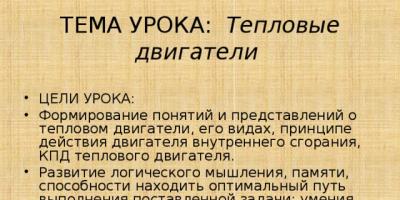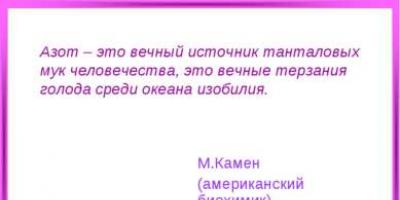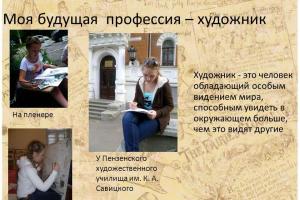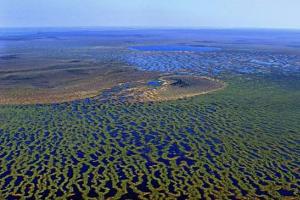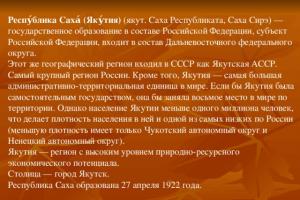Anna Shirkova
Experimental activity of older preschoolers on the topic: “Properties of air” using electronic educational resources.
Experimental activities of older preschoolers on the topic"Properties of air" With using ESM.
Target: experimental learning is to create conditions under which children:
Independently and willingly acquire missing knowledge from various sources;
Learn to use acquired knowledge to solve cognitive and practical problems;
Acquire communication skills by working in various groups;
Develop research skills (ability to identify problems, collect information, observe, conduct experiment, analysis, hypothesis building, generalization);
Develop systems thinking.
Tasks:
Strengthen children's knowledge about properties of air:
Activate and enrich children's vocabulary with nouns, adjectives and verbs topic;
Develop observation skills, ability to draw conclusions, analyze; to cultivate in children a cognitive interest, the ability to see amazing things in the world around them;
Foster an environmental culture;
Cultivate accuracy when working.
Children are already familiar with the research method, it stages: think for yourself; ask another person; look in books; look on the Internet; observe; conduct experiment. We are also familiar with the method of recording research results - pictograms. Subsequence experimental activities complied with. A research topic was chosen.
Using ESM:
For additional motivation in choosing a topic presentation was shown« Air» . Children became interested in the problem of cleanliness air and its properties.
Stages of research – think for yourself; ask another person; look in books; look on the Internet have been passed. Below is a more detailed part experimental activities of older preschoolers"Properties of air" – observation and experiment.
Progress of experimental activities
1. « Air exists!»
Educator: Crumple a piece of paper and push it into a plastic glass so that it does not fall when the glass is turned over. Submerge the glass completely under water, holding it with the opening facing down. Take out the glass. Check to see if the paper in it is wet? The paper in the glass remains dry.
Water cannot fill an upside down glass because it is already full air. "Empty" the glass is full air. Air - gas. It has no size or shape, but can fill any space.
Conclusion: Air exists!
2. « Air is invisible»
Educator: Guys, put it down palm on the chest and feel how the chest rises when inhaling and falls when exhaling. It goes in and out air which we breathe.
Offer to children cover your mouth and nose with your palms, count out loud what time it is (in conventional units) they may not be able to breathe. Air is everywhere: both in the group, and at our home, and on the street, we just don’t see him, but we know that he is always around us. Nobody sees the air, that's why it's called "invisible".
Conclusion: A person needs air, For life. The air is colorless, transparent (everything can be seen through it).
3. « The air has no taste»
Encourage children to breathe through their mouths air. Can you taste it air?
Conclusion: The air is tasteless.
4. « The air has no smell»
Encourage children to breathe through their nose air. Then take lemon, garlic, cologne and invite the children to take turns trying to smell the smells that spread throughout the room.
Conclusion: Clean air It has no odor of its own, but can transmit odors.
5. "We breathe air»
Educator: Take glasses of water and cocktail straws and exhale air through a straw into the water. Bubbles will appear in the glass air. It's coming out air from our lungs. The more air, the more bubbles.
Conclusion: We breathe air.
6. "Funny Bubbles"
Educator: Take an empty plastic bottle and ask to put it in a bowl of water. The bottles begin to come out of the neck and rise up air bubbles.
Conclusion: The bottle is not empty - it contains air. Air bubbles rise to the surface because air is lighter than water.
7. "Trained Raisins"
Educator: Pour a glass of sparkling water or lemonade and put a few raisins in it - let them be fish. The fish will fall to the bottom. Now make the passes hands: “Crible, crable, boom! Highlights - you're swimming fish!.
And before the eyes of the amazed children, the highlights will begin to emerge. Is it really true that the raisins have become fish? Yes, of course not.
At the beginning the raisins sink because they are heavier than water, then the bubbles air from lemonade(they look like small Balloons) raisins stick around and they float to the surface.
Conclusion: Air is lighter than water, That's why air bubbles and bring the raisins to the surface.
8. "Let's catch air»
Educator: Take the plastic bags and help them catch them with a thrilling movement air and close the bag. The bags become like pillows.
Conclusion: The air is not"invisible". It can be seen enclosed in a shell.
9. "Does it have weight? air?»
Educator: I have scales on which we can weigh air(make three holes in the ruler (at least 30 cm long) two at the edges and one exactly in the center. Tie one end of the cord to the central hole, and the other, for example, to the back of a chair).
Let's make it big air ball and tie it to one of the holes on the end of the ruler. Tie a jar or box to the second hole. Place a little sand or rice in a jar to balance balloon. Let's allow air come out of the ball little by little (glue a piece of tape to the ball and pierce it with a needle). The balance is disturbed, the jar with the load falls down.
Conclusion: When air comes out of the balloon, the ball becomes lighter. Hence - air has weight.
10. "Live Snake"
Educator: Look at the snake (a circle cut in a spiral and suspended by a thread). See how the snake rotates above the burning candle. The snake rotates, but does not go down. Let's run our hand over the flame to determine what the air above the candle is warmer.
Conclusion: Warm air, rising up, does not allow the snake to fall. Air moves and causes the paper spiral to rotate.
11. « The air is moving»
Educator: Let's make a fan out of paper and wave the fan near our face. The fan moves and seems to urge air. Air also begins to move, and we feel a light breeze.
Conclusion: Wind is movement air.
12. "Compressed and smooth bottle"
Educator: Take an empty plastic bottle and close it tightly with a lid. The bottle has an even shape. Put the bottle in the freezer and take it out in 30 minutes. The bottle changed shape, it shrank.
Conclusion: Cold the air is compressed.
13. "Is it possible to compress air»
Educator: Take a syringe without a needle and draw into it air. Close the hole with your finger and press firmly on the piston. At first it will be difficult for the piston to move, and then it will stop altogether. And the finger covering the hole will experience strong pressure.
Now, continuing to close the hole, release the piston, it will return to its original position.
Conclusion: Air can be compressed, – the piston does this. Compression increases pressure air and on the finger, and onto the piston. But compressed air strive to expand, that is, return to its original position.
14. « Air presses on water»
Educator: Take a syringe without a needle, draw a little into it air, and then draw water.
Let's press the piston (don't forget to substitute the container). The piston begins to press on air, which in turn puts pressure on the water in the syringe and water flows out of the syringe.
Conclusion: Air strives to maintain its original position, therefore it displaces water from the syringe.
15. "Rocket ball"
Educator: Let's cheat balloons and release them. Pay attention to the trajectory and duration of the balls' flight. Help the children conclude that in order for the ball to fly longer, you need to inflate it more.
Air, breaking out of the ball, makes it move in the opposite direction. Tell me that the same principle used in jet engines.
Conclusion: Air, breaking out of the ball, makes it move in the opposite direction, the same principle used in jet engines.
16."Candle in a glass"
Educator: How can you extinguish a candle (flame, without touching the candle or the flame and without blowing it out. Let’s do it together with the children following: light a candle, cover it with a jar and watch until the candle goes out.
Let's bring the children to the conclusion that combustion requires oxygen.
Conclusion: When oxygen supply to the fire is obstructed, the fire goes out. People use This is for extinguishing fire in fires.
Children: Air, he is a special object,
You can't touch it with your hands.
To see it with your eyes
They blew into the tubes at once.
Then, to the delight of the children
We inflated the balloons.
All this work, so to speak.
Called it a smart word "experience".
All information received was analyzed and summarized. Help young researchers summarize the data obtained. This is a difficult task for children. But at the same time, it should be understood that with this material, like no other, it is possible to develop a child’s thinking, creative abilities, and speech.
After summarizing the information, two volunteer researchers took turns complementing each other and made a report.
Based on the results of the defense, encourage not only the speakers, but also those who asked "smart", interesting questions.
Material:
Presentation « Air» .
Young researcher's folder.
Children's encyclopedias. .
Plastic bottle, plastic cups, paper napkins, cocktail straws, sparkling water, raisins, cereal, plastic bags, soap bubbles, homemade scales, syringe (without needle, glass jar with a tight lid,
Balloons, basin with water, needle ( used only in the presence of an adult, candle (used only in the presence of an adult).
Small pieces of paper, colored pencils.
Scientist's cap, mantle - cape.
To use presentation previews, create a Google account and log in to it: https://accounts.google.com
Slide captions:
About the air The world around us Grade 2
What cannot be attributed to nature?
What groups can these items be divided into? Living nature Non-living nature
What objects are living nature?
What objects are considered inanimate?
Make up a word based on the first letters of the names of objects. Air
It can be warm in the summer, It blows cold in the winter, When frost paints the glass and lies like a border on them, We don’t talk about it. We just breathe it in - we need it! It is a transparent, invisible, light and colorless gas. He envelops us with a weightless scarf. It is in the forest - thick, fragrant, Smells of resinous freshness, Smells of oak and pine.
Experiment 1. Wave your palms near your face. We feel a light breeze - this is air movement.
Experiment 2. Take an empty transparent plastic bottle and check that there really is nothing there. If we put a bottle in water, we will see bubbles coming out of the neck. This water displaces the air from the bottle. Most objects that appear empty are actually filled with air.
Air is a mixture of different gases. carbon dioxide 1% Oxygen 21% Nitrogen 78%
Which gas is the most important in the air? When living things breathe, they absorb oxygen from the air and release carbon dioxide.
Experiment 3. Let's inflate a balloon. Now let's inhale the air from it. Let's exhale. Let's breathe again. It becomes increasingly difficult to inhale. Why? We “caught” all the air from the balloon. If there was a mouse inside the ball now, it would suffocate. - Why do we ventilate the room?
All living things would have suffocated long ago if not for plants. And the giant oak, and the blade of grass, and tiny algae greedily catch carbon dioxide; plants need it for nutrition. And they return oxygen to the air. Forests, meadows, fields, parks, gardens - all plants on Earth give us life-giving oxygen instead of carbon dioxide. The more greenery there is, the cleaner the air.
Project “Air is invisible”.
MKOU secondary school Pudozhgorsky


Project participants:
Pupils of the senior mixed age group (4-5 years old)
Educators;
Parents.
Duration: 2 weeks
Project type: information and research
Educational area : Cognition. World of nature. Safety

Objective of the project:
Project objectives:

Problematic issues resolved during the project:
Why is there no life without air?
Why is air called invisible?
How can you see or touch the air?
What is wind?
What is the wind like?
How can wind harm or help people?
Expected result:
Pupils will have an understanding of the properties of air; will be able to talk about the benefits air brings to plants and animals to humans, and will acquire knowledge that air must be protected from pollution.
Previous work:
Looking at illustrations, conversations, reading fiction, blowing balloons, soap bubbles, observing the wind, steam.
Project organization:
Stage 1. Preparatory
Statement of the problem, determination of the goals and objectives of the research work.
While playing in a group with soap bubbles and inflating balloons for the holiday, the children became interested in why balloons and soap bubbles are inflated. What helps inflate them? How does this all happen? The children were surprised what the air had to do with it and how it helped make soap bubbles. Then the teacher began to inflate the balloon, and when she inflated it, she asked: “Why is the balloon inflated? What are we inflating there...?” During reflection and conversation, the children identified the problem: “What is air?” “Where does it come from?”
In accordance with the problem, the children, together with the teacher, set tasks for further research of the problem:
1) Find out as much as possible about air.
2) Conduct experiments with air.
Selection of visual teaching aids and demonstration material
Creation of a technical base for children's experimentation:
Basic equipment: containers for playing with water of different volumes and shapes;
natural materials: pebbles, sand, recycled materials: pieces of leather, balloons, bags
Working with parents :
Questioning.
Design of folders - slides, folders - clamshells. Selection of artistic words, riddles.
Exhibition of drawings.
Individual conversations.
Design of a parent's corner, posting articles, consultations, recommendations on the topic of the project

Stage 2
Organization of research within the project.
1. Educational activities
2. Observations.
4. Experiences and experiments.
Design of the exhibition of drawings “Invisible Air”

Stage 3
Presentation of research results. 1) Making a card index of entertaining experiments and experiments with air
2) Creative presentation with the participation of children “Experiments with air.”
3) Open lesson “What do we know about air.”

Poems about air and wind
- Physical education minute:
- marching in place swing our arms above our heads "floating" movements arms in triangle above head shake our hands in front of us hands on waist, bending to the side turn on the spot
He is transparent and invisible, Light and colorless gas. With a weightless scarf It envelops us. He is in the forest - thick, fragrant, Like a healing infusion, Smells of resinous freshness, Smells of oak and pine. In summer it is warm, It blows cold in winter, When the frost lay on the glass Lush white fringe. We don't notice him We don't talk about him. We just breathe it in - We can’t bypass him!

- Passes through the nose into the chest
And he's on his way back
He's invisible and yet
We cannot live without it (air)
- So big it takes up the whole world
- So small that air can fit into any crack
- Prowls across the field, Sings and whistles Breaks trees Bends to the ground. (Wind).
- 1) He waved his sleeves and bent the trees. (Wind)
- 2) Not a beast, but a howl. (Wind)
- 3) No wings, flies everywhere (Wind)
- 4) He often flies around, he has broken a lot of trees, but no one has ever seen or held him anywhere. (Wind)
5) I’ll swing the birch tree, I’ll push you, I’ll attack you, I’ll whistle. Who am I? Can you guess? (Wind)
- 6) Runs without legs, flies without wings. (Wind)
Experiments with air
Turn the glass upside down and slowly lower it into the jar. Draw children's attention to the fact that the glass must be held very level.
Conclusion: there is air in the glass, it does not let water in.
What appears in the water? (Air bubbles are visible).
Conclusion:
Children are asked to place a straw in a bowl of water and blow into it. What happens? (It turns out to be a storm).
Conclusion: Air is inside us. We blow into the tube and he comes out. But in order to blow more, we first inhale new air, and then exhale through the tube and we get bubbles.
Children are invited to blow on the pinwheel. The exhaled air hits the blades and begins to rotate them. You inhaled and exhaled, the air moved and it became a breeze. This means that when air moves, it produces wind. The breeze created by the flow of air from the chest caused the blades of the turntable to rotate.
Conclusion: Air can move objects.
Experiment 5. “Where is the air hidden? »
Equipment: plastic bags, toothpicks.
Tell me, do you see the air around us? (no, we don't see)
So, what kind of air is it? (invisible) .
Let's catch some air.
Take plastic bags from the table and try to catch the air.
Twist the bags.
What happened to the packages? (they puffed up, took shape)
Try squeezing the bag. Why doesn't it work? (there is air inside)
Where can this property of air be used? (inflatable mattress, lifebuoy).
Let's conclude: Air has no shape, it takes the shape of the object it hits.
Now look at your hand through the bag. Do you see the hand? (we see) .
So, what kind of air is it? (it is transparent, colorless, invisible).
Let's check, is there really air inside?
Take a sharp stick and carefully pierce the bag. Bring it to your face and press it with your hands.
What do you feel? (hiss) .
This is how the air comes out. We don't see it, but we feel it.
What conclusion can we draw now? Air cannot be seen, but it can be felt.
Conclusion: Air is transparent, invisible, colorless, and has no form.

Experiment 6. “How to see air? »
Equipment:
(air movement - breeze)
(This is the air we exhaled)
(Air bubbles rise up)
Conclusion:

- Equipment:
- What happens? Does water get into the glass? Why not?
- Children are asked to lower the glass into the jar of water again, but now they are asked to hold the glass not straight, but tilt it slightly.
- What appears in the water? (Air bubbles visible) .
- Where did they come from? The air leaves the glass and water takes its place.
- Conclusion: The air is transparent, invisible.
Experiment 7. “Air movement”
Equipment:
(trees are swaying, clouds are running, a pinwheel is spinning, steam is coming out of the mouth)
(fan)
(We feel the air moving)
Conclusion:

- Experience No. 3. "Air is invisible"
- Equipment: large transparent container with water, glass, napkin.
- You need to secure a paper napkin to the bottom of the glass. Turn the glass upside down and slowly lower it into a container of water.
- Draw children's attention to the fact that the glass must be held very level. They took the glass out of the water and touched the napkin; it turned out to be dry.
- What happens? Does water get into the glass? Why not?
- This proves that there was air in the glass, which prevented water from entering the glass. And since there is no water, it means she cannot wet the napkin.
- Children are asked to lower the glass into the jar of water again, but now they are asked to hold the glass not straight, but tilt it slightly.
- What appears in the water? (Air bubbles visible) .
- Where did they come from? The air leaves the glass and water takes its place.
- Conclusion: The air is transparent, invisible.
Experiment 8. “Does air have weight? »
Equipment: can be replaced with a stick about 60 cm long. Attach a string to the middle and balloons at the ends)
(The ball without air has become lighter)
Conclusion:

- Experience No. 3. "Air is invisible"
- Equipment: large transparent container with water, glass, napkin.
- You need to secure a paper napkin to the bottom of the glass. Turn the glass upside down and slowly lower it into a container of water.
- Draw children's attention to the fact that the glass must be held very level. They took the glass out of the water and touched the napkin; it turned out to be dry.
- What happens? Does water get into the glass? Why not?
- This proves that there was air in the glass, which prevented water from entering the glass. And since there is no water, it means she cannot wet the napkin.
- Children are asked to lower the glass into the jar of water again, but now they are asked to hold the glass not straight, but tilt it slightly.
- What appears in the water? (Air bubbles visible) .
- Where did they come from? The air leaves the glass and water takes its place.
- Conclusion: The air is transparent, invisible.
Experience 9.
"Mysterious Bubbles"
Task - Equipment -

Experience 10
"Blowing soap bubbles."
Task - Equipment -

Experience 11.
"Battleship".
Task - Equipment -

Experiment with air No. 6.
The teacher asks the children which toy they know well has a lot of air in it. This toy is round, can jump, roll, and can be thrown. But if a hole appears in it, even a very small one, then the air will come out of it and it will not be able to jump. (Children's answers are listened to, balls are distributed). Children are asked to knock on the floor first with a deflated ball, then with a regular one. Is there a difference? What is the reason that one ball easily bounces off the floor, while the other barely bounces?
Conclusion: the more air in the ball, the better it bounces.
Air experiment No. 7
Experiment with air No. 10.

Experiment with air No. 11.
Experiment with air No. 12.


Planning observations with children of the middle group to familiarize themselves with air.
Season
Observations
AUTUMN
1. The air at the beginning of autumn: cool, transparent.
2. Observing clouds in windy and calm weather. Why do clouds float? Note whether the clouds are high or low. Give an idea of cumulus (like heaps of cotton wool) and cirrus (like feathers - light, translucent) clouds.
WINTER
1. The air on a cloudy (cold and humid) and on a clear day (dry, “stings” the nose and cheeks).
2. Observations of smoke: in wet, windy weather, smoke spreads; in frosty weather there is a column of smoke.
3. Observations of drifting snow. Explain what it is.
SPRING
1. Spring wind: clean, fresh, warm.
2. Watch how the wind drives ripples through the puddles. Why are there waves?
SUMMER
1. Wind observation: warm, light, cool. If the tops of the trees bend and the branches sway, the wind is strong and gusty. If the leaves sway slightly, the wind is weak. Watch how, before a thunderstorm, a strong wind lifts and swirls dust.
2. Watching a thunderstorm. Explain that the less time between the flash of lightning and the clap of thunder, the faster the rain will begin.
3. Comparison of clouds and clouds.
Experiments with air for children



- The air is soft blue,
- Breathe easily and to your heart's content. We sometimes forget -
- The air is leased to us,
- He is the only one among all earthlings,
- For life to triumph,
- We need to protect the air.
- Take care of your planet
- After all, there is no other one in the world!
- We need him to breathe
- To inflate the balloon
- With us every hour
- But we don’t see it. What is this? (air)

- 1. It is unknown where it lives, it will swoop down and bend the trees. When he whistles, there’s a shiver in the river, Mischievous, but you won’t stop.
- 2. Without arms, without legs, But he opens the gate.
- 3. He ran along the meadow path - The poppies nodded their heads. He ran along the blue river - the river became pockmarked.
- 4. Breaks branches - raises dust. You hear him, but you don't see him.
- Carefully the wind came out of the gate; He knocked on the window and ran along the roof. I played a little with bird cherry branches and scolded my acquaintances’ sparrows for something. And cheerfully spreading his young wings, he flew somewhere racing with the dust.

Rules for working with various materials: With water:
- Upon completion of work:




Around us in a group, on the street, at home there is always air ; If we begin to inflate the balloon, the air will fill all the space provided.

During the completion of the project, children will be asked the following questions: “What is air for?, What is air?”
Expected responses like this:
- “Air helps ships sail”
- “Air is a strong wind, it helps to throw leaves from trees in the fall...”
- “Even when there is a strong wind, they say that it is a hurricane...”
- “The wind makes waves on the sea and we like to swim in the waves...” (and many others)

In grades 2-3 of primary school, when studying the topic of air around the world, children are often asked to complete a presentation as homework.
To prevent your presentation from being similar to your classmates’ projects, we offer a selection of materials on the topic of air.
To create your own presentation you will need:
- Pictures
Download the presentation about air from our website.
Examples of some slides are presented below.



Texts used for presentation about air:
Air is a mixture of gases, consisting of 78% nitrogen, 21% oxygen, relatively little carbon dioxide, and also water vapor.
Air is transparent and invisible, odorless, has no definite volume, has a mass lighter than water, warm air is lighter than cold air, and rises upward.
The flight of airplanes, hot air balloons, the movement of a sailboat and a wind power plant, the soaring of birds, the operation of a vacuum cleaner - all this occurs due to the properties of air: elasticity, compressibility, mass.
Low thermal conductivity of air is used, for example, in double window frames. Glass by itself does not protect against cold; it only retains air, which is a poor conductor of heat. And the apartment maintains the desired temperature.
Animals raise their fur, birds crest when they are cold, and a person puts on a warm sweater - all this only to surround himself with an airy shell that does not conduct heat well.
Sound is vibrations in the air that are picked up by the ear. The most enormous cosmic disasters, such as the explosion of a star, take place completely silently, in perfect silence. We can experience the pleasure of hearing sound only on Earth, where there is atmospheric air.
Air pollution leads to the greenhouse effect. The surface of the globe is gradually warming up. Glaciers at the poles are melting, the level of the world's oceans is rising. More and more disasters are befalling humanity. In order to live comfortably in the future, a person must take care of protecting the cleanliness of the air by reducing emissions from industrial enterprises and cars. This is a question of the existence of a bright future.
Wind is one of the most common natural phenomena. Familiar and understandable to everyone. Sometimes pleasant, sometimes unpleasant (tornado, tornado, hurricane).
What is wind? Where the air is hotter, it rises; colder, heavier air sinks. We say: the wind blows.
Slide 2
What cannot be attributed to nature?
Slide 3
What groups can these items be divided into?
- Live nature
- Inanimate nature
Slide 4
What objects are living nature?
Slide 5
What objects are considered inanimate?
Slide 6
Make up a word based on the first letters of the names of objects.
Slide 7
In summer it is warm,
It blows cold in winter,
When frost paints the glass
And lies on them like a border,
We don't talk about him.
We just breathe it in -
We need him!
He is transparent and invisible,
Light and colorless gas.
With a weightless scarf
It envelops us.
He is in the forest - thick, fragrant,
Smells of resinous freshness,
Smells of oak and pine.
Slide 8
Experience 1
Wave your palms near your face.
We feel a light breeze - this is air movement.
Slide 9
Experience 2.
Let's take an empty transparent plastic bottle and check that there really is nothing there. If we put a bottle in water, we will see bubbles coming out of the neck. This water displaces the air from the bottle. Most objects that appear empty are actually filled with air.
Slide 10
Air is a mixture of different gases
- Carbon dioxide 1%
- Oxygen 21%
- Nitrogen 78%
Slide 11
Which gas is the most important in the air?
When living things breathe, they absorb oxygen from the air and release carbon dioxide.
Slide 12
Experience 3
Let's inflate a balloon. Now let's inhale the air from it. Let's exhale. Let's breathe again. It becomes increasingly difficult to inhale. Why? We “caught” all the air from the balloon. If there was a mouse inside the ball now, it would suffocate.
Why do we ventilate the room?
Slide 13
All living things would have suffocated long ago if not for plants. And the giant oak, and the blade of grass, and tiny algae greedily catch carbon dioxide; plants need it for nutrition. And they return oxygen to the air. Forests, meadows, fields, parks, gardens - all plants on Earth give us life-giving oxygen instead of carbon dioxide. The more greenery there is, the cleaner the air.

